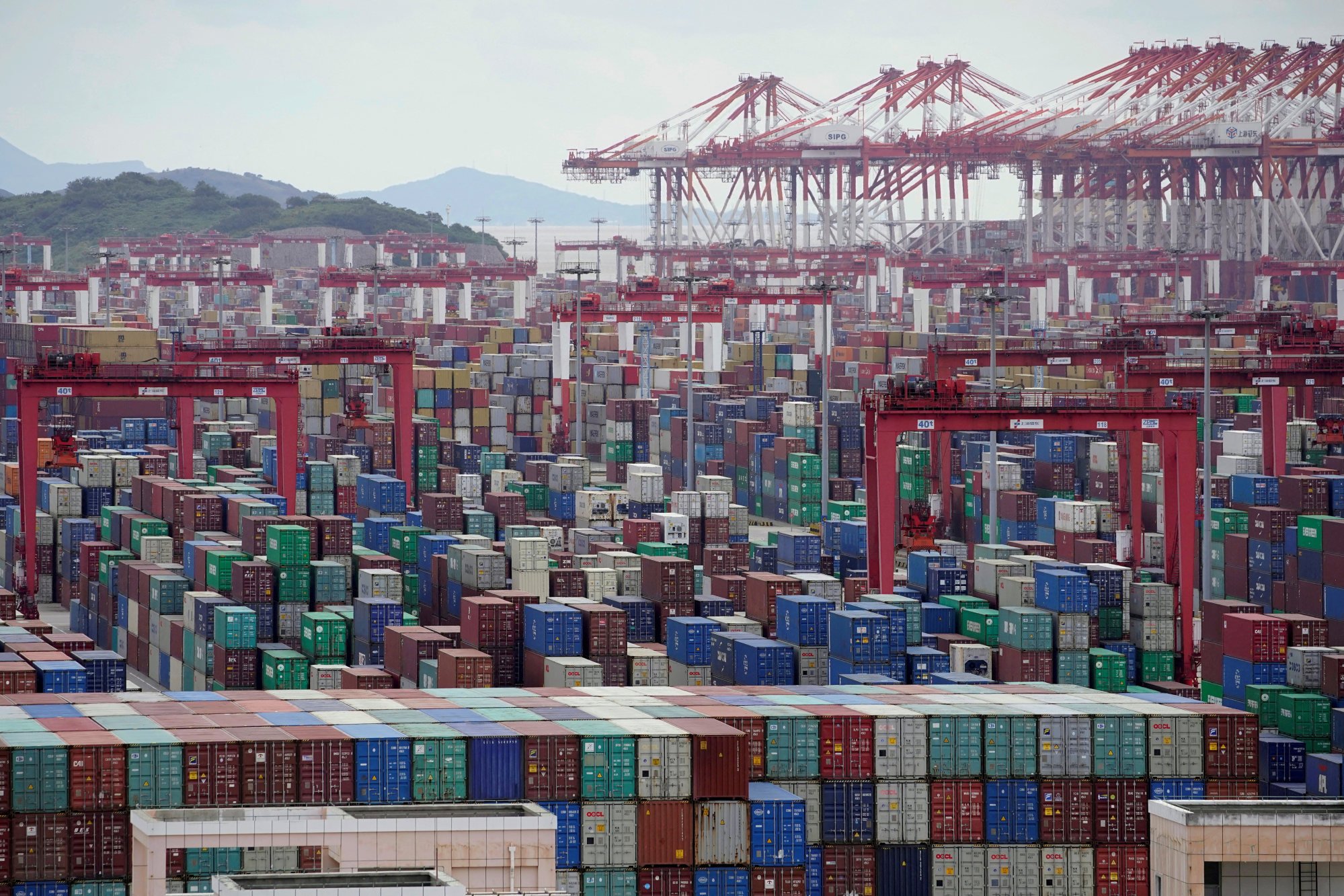
Shanghai port operator aims to expand capacity of its automated terminal at Yangshan and help shippers reduce waiting time and costs
- Yangshan Port’s fourth phase, the world’s largest automated container terminal, expected to handle 6.6 million teus (20-foot equivalent units) this year
- The operator of the fourth phase is eyeing an annual capacity of over 7 million teus after enhancing automation and logistics arrangements
Jin Jian, general manager of Shandong Container Terminal, operator of the Yangshan Port’s fourth phase, the world’s largest automated container terminal, told the Post that the 2,350-metre harbour is expected to handle 6.6 million teus (20-foot equivalent units) this year, surpassing the design capacity of 6.5 million teus.
“We are looking to make the terminal more intelligent and environment-friendly as we increase its capacity to better serve the container liners” he said on Tuesday. “An annual capacity of more than 7 million teus is targeted as we expand computing power and make proper logistics arrangements.”
Shandong Container Terminal is a subsidiary of the state-owned Shanghai International Port Group (SIPG) which has made a 12.8 billion yuan (US$1.8 billion) investment in the fourth phase of the expansion.

The automated terminal, which began operations in end-2017, handled about 2 million teus in 2018.
At present, 145 automated guided vehicles, the largest fleet of any container terminal worldwide, are used in the terminal to handle loading, discharging and transport of containers round the clock, Jin said.
Shanghai ‘doubles down’ on efforts to develop Lingang free-trade zone
He added that a quickened pace of handling containers could add lustre to the automated terminal, drawing more global container traffic.
The 6.6 million teus annual throughput amounts to over a quarter of the total container handling volume of 24 million teus at the Yangshan port in 2022.
Shanghai’s ports reported a total container throughput of 47.3 million teus in 2022 as the mainland’s commercial and financial hub retained the title of the world’s largest port for the 13th consecutive year.
Yangshan is also part of Shanghai’s FTZ.
Construction of the deep water port began in 2002 following China’s entry into the World Trade Organization (WTO), which led to thriving trade emanating from the Yangtze River Delta around Shanghai.
China’s tensions with the US and other developed economies have dented its exports and imports this year, exacerbating a bearish outlook for the world’s second-largest economy.
China’s exports dropped for the fourth consecutive month in August, falling by 8.8 per cent compared to a year earlier to US$284.9 billion, according to customs data.
The decline, however, narrowed from a fall of 14.5 per cent in July, and was above the forecast by financial data provider Wind for a drop of 9.5 per cent.
Imports plunged by 7.3 per cent year on year last month to US$216.5 billion, narrowing from a 12.4 per cent decline in July, and exceeding the expectations from Chinese financial data provider Wind Information for a drop of 8.2 per cent.
“Shanghai will continue to defend its title as the world’s largest container port this year, and the port operator is determined to use more hi-tech and digital technologies to bolster efficiency of the terminals,” said Xiong Hao, assistant general manager at Shanghai Jump International Shipping. “The efforts can help ease cross-border cargo flows and will benefit shippers and traders in the long term.”

